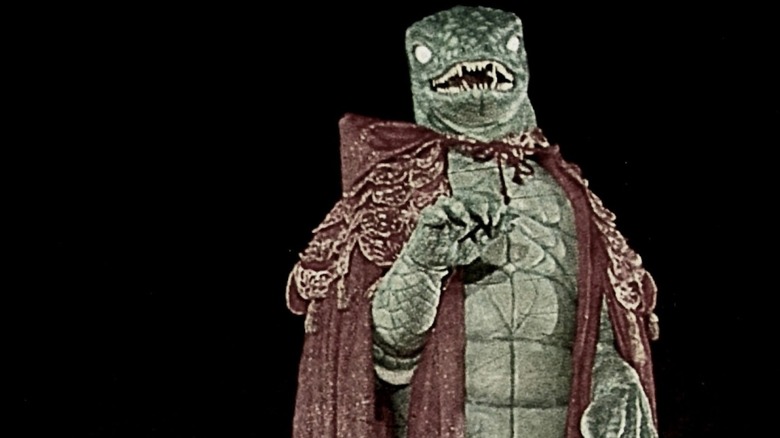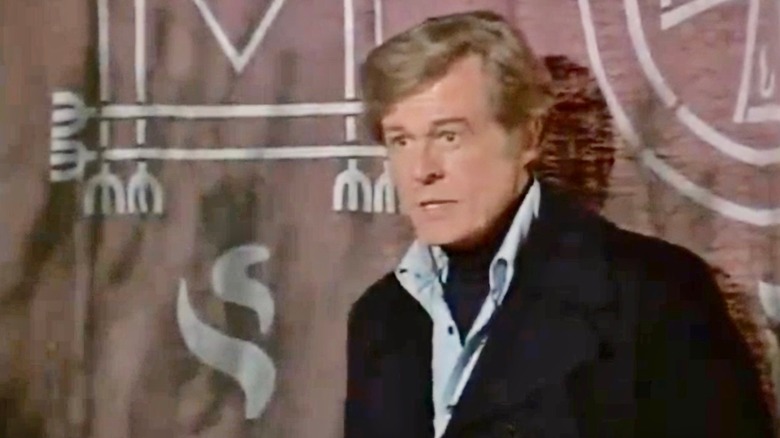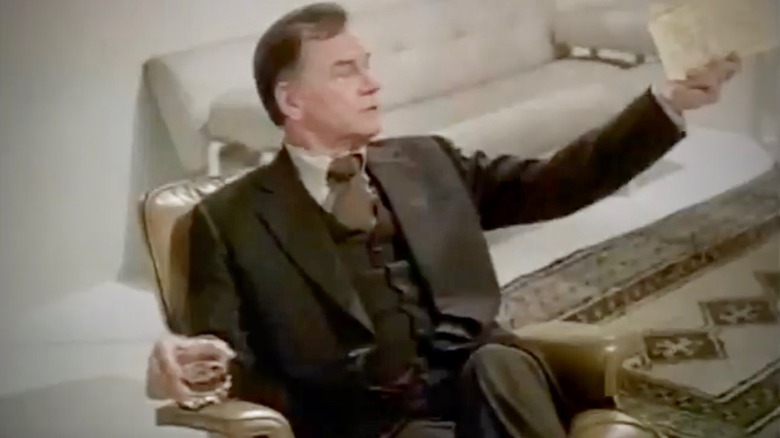After Star Trek, Gene Roddenberry Made A TV Horror Movie That Should Have Become A Franchise
After "Star Trek" was canceled in 1969, show creator Gene Roddenberry went through a prolonged period of struggle. His TV career up to that point had mostly involved writing Westerns and cop shows, usually finding steady gigs as a writer-for-hire. Not only did "Star Trek" change the industry's perception of him — he was now a sci-fi guy — but he was associated with its failure. In 1969, the cult audience for "Star Trek" was still rather small, and fan conventions weren't yet common.
Throughout the 1970s, Roddenberry tried, unsuccessfully, to get other major TV and film projects off the ground. In 1971, he wrote the ultra-sexual serial killer thriller "Pretty Maids All in a Row," starring Rock Hudson and Angie Dickinson, and while that film is bonkers and enjoyable, it was hardly a hit. In 1973, he created a post-apocalyptic TV series called "Genesis II," but that never got past its pilot episode. Ditto 1974's "The Questor Tapes," a drama about a hyper-advanced android, and "Planet Earth," a second post-apocalyptic drama, this time with John Saxon. All of these pilots were eventually aired as TV movies. If you haven't heard of them, don't worry. They weren't terribly popular, and remain footnotes in Roddenberry's career.
In 1977, Roddenberry decided to try something a little different. He attempted to create a high-profile detective series that was reminiscent of Sherlock Holmes, featuring a stalwart detective named William Sebastian (Robert Culp) and his intelligent sidekick Dr. Hamilton (Gig Young). This time, though, the detective would delve into the world of the supernatural, fighting cults and wizards. The series was called "Spectre," and it remains the most fantastical thing Roddenberry has ever produced. "Spectre," like all of Roddenberry's 1970s TV shows, never made it past the pilot, airing as a TV movie in America and given a theatrical release overseas.
It's also kind of awesome. It's certainly ambitious.
Robert Culp played a Sherlock Holmes-like detective, investigating the supernatural in Spectre
"Spectre," as mentioned, is the only time Roddenberry ever wrote a TV universe wherein magic was 100% real. The William Sebastian character was fixated on the idea of human evil, but knew it came from demonic forces. He had previously been cursed by the demon Asmodeus with perpetual chronic illnesses, and requires the aid of Dr. Hamilton, a.k.a. Ham, to work on his latest case. He must look into the machinations of the wealthy Cyon family and a demon infection they seem to be suffering from. Early in the pilot, Sebastian encounters a woman he immediately pegs as a succubus, and he whips out one of the apocryphal holy books as a means of subduing her.
The investigation continues apace, with Sebastian and Ham traveling to England and uncovering further Satanic shenanigans. A colleague, for instance, is found sacrificed in a pentagram. This, in turn, leads them to Cyon Manor, where everyone is behaving awfully strangely and the manse has become a home for sin and vice. No points for guessing that the family is under the influence of Asmodeus, and that they have constructed a temple to the demon in the basement. One of the characters Sebastian and Ham have encountered along the way may very well be Asmodeus in disguise — they just don't know who. The amazing John Hurt plays a member of the Cyon clan. Majel Barrett, Roddenberry's wife, plays Sebastian's housekeeper Lilith, a practicing witch.
"Spectre" climaxes with a demonic ritual and a blood sacrifice that Sebastian has to stop. Because this was a TV pilot, we can rest assured that he will be successful; the protagonist of a TV series wouldn't be killed off in the very first episode. An epilogue implies, however, that Asmodeus had somehow escaped the climax intact and that the demon would reappear to cause more trouble for Sebastian and Ham. The UK theatrical cut of "Spectre" was expanded slightly to include more nudity.
Spectre should have become a series
Robert Culp's character is fascinating. He was imagined as an American Sherlock Holmes, but one who had seen some s***. Indeed, there is some dialogue explaining that Sebastian once stuck to empirical data and the sciences in his investigation, but couldn't account for the rise of horror and brutality in the world around him. Serial killers and monsters like the Boston Stranger, Richard Speck, and Charles Manson couldn't be scientifically explained, leading Sebastian to the hypothesis that evil was, indeed, a force unto itself. This led into his intense study of the occult and his tinkering with demonology.
Roddenberry was not a religious man, and often rejected ideas of faith and religion from his work ("Star Trek" is set in a largely post-religious future). It's unusual that he should throw himself headlong into the supernatural the way he did in "Spectre." The movie was directed by Clive Donner ("What's New, Pussycat?").
Watching the pilot, one can see why it wasn't picked up: it's too scary. For 1970s television, "Spectre" is pretty intense, depicting scenes of Satanic sacrifice, demonic images, and proof positive of the existence of demons. These types of images would eventually become common on TV (see the TV series "Evil"), but in 1977, they were still edgy and terrifying. Roddenberry was pushing the envelope. In the United States, networks have long been notoriously prudish, and there was no way any of the major TV studios would have slotted a satanic series of this frankness into their Thursday night lineups.
It's a pity, though, because this is a great idea for a series. Culp and Young have good chemistry and unique characters, and one can easily see them developing their relationship over a multi-season series. There's a parallel universe wherein "Spectre" was picked up, ran for many years, and has been rebooted several times. It's too bad we can't live in that universe.


